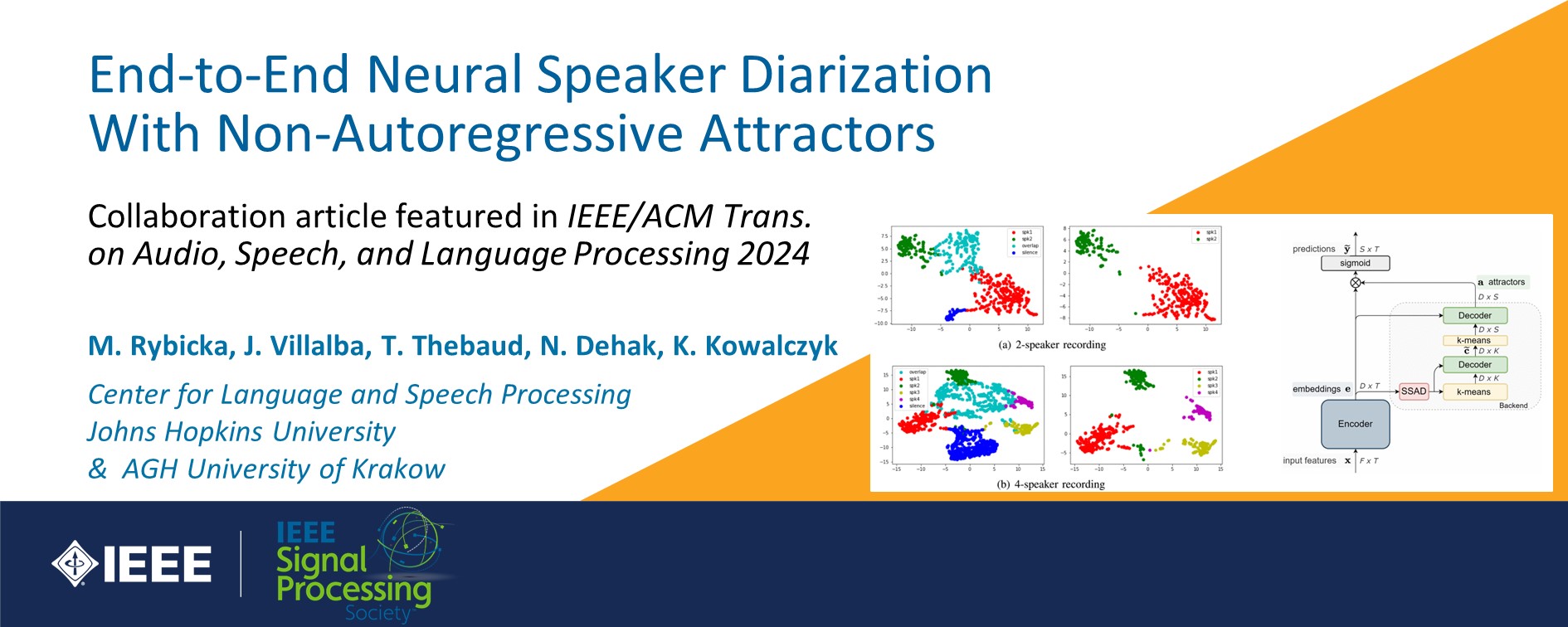We are very pleased to inform that a journal article on diarization by Magdalena Rybicka in collaboration with partners from John Hopkins University has just been published on IEEE Xplore.
Title: End-to-End Neural Speaker Diarization With Non-Autoregressive Attractors
Authors: M. Rybicka, J. Villalba, T. Thebaud, N. Dehak and K. Kowalczyk
Abstract: Despite many recent developments in speaker diarization, it remains a challenge and an active area of research to make diarization robust and effective in real-life scenarios. Well-established clustering-based methods are showing good performance and qualities. However, such systems are built of several independent, separately optimized modules, which may cause non-optimum performance. End-to-end neural speaker diarization (EEND) systems are considered the next stepping stone in pursuing high-performance diarization. Nevertheless, this approach also suffers limitations, such as dealing with long recordings and scenarios with a large (more than four) or unknown number of speakers in the recording. The appearance of EEND with encoder-decoder-based attractors (EEND-EDA) enabled us to deal with recordings that contain a flexible number of speakers thanks to an LSTM-based EDA module. A competitive alternative over the referenced EEND-EDA baseline is the EEND with non-autoregressive attractor (EEND-NAA) estimation, proposed recently by the authors of this article. NAA back-end incorporates k-means clustering as part of the attractor estimation and an attractor refinement module based on a Transformer decoder. However, in our previous work on EEND-NAA, we assumed a known number of speakers, and the experimental evaluation was limited to 2-speaker recordings only. In this article, we describe in detail our recent EEND-NAA approach and propose further improvements to the EEND-NAA architecture, introducing three novel variants of the NAA back-end, which can handle recordings containing speech of a variable and unknown number of speakers. Conducted experiments include simulated mixtures generated using the Switchboard and NIST SRE datasets and real-life recordings from the CALLHOME and DIHARD II datasets. In experimental evaluation, the proposed systems achieve up to 51% relative improvement for the simulated scenario and up to 15% for real recordings over the baseline EEND-EDA.
